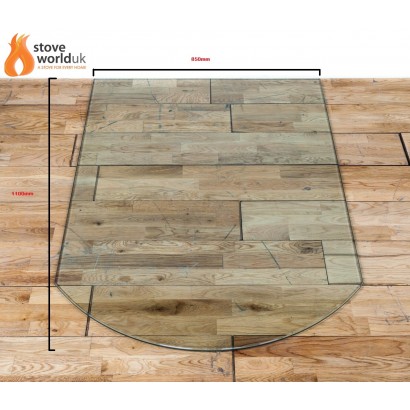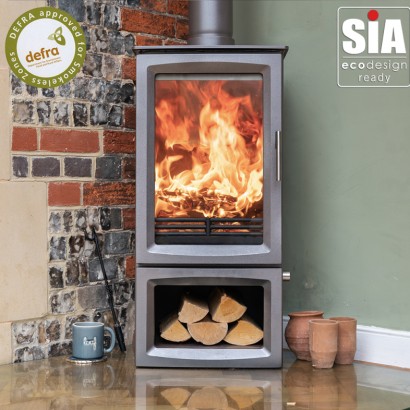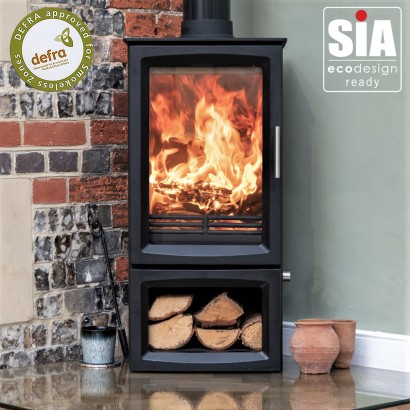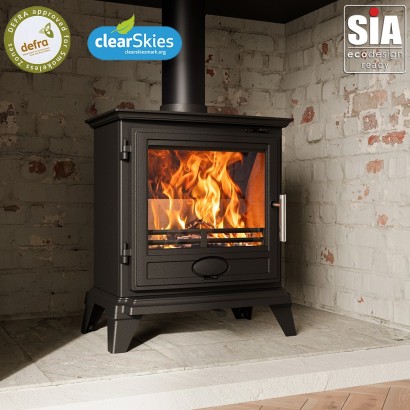12mm Hearth Regulations for Free Standing Stoves

Why are there special building regulations for 12mm hearths and what does it mean?
If you've never owned a stove before, you might think it's fine to install it on the floor in the corner of the room if your floor is made from ceramic tiles or bricks that couldn't catch fire. But that's not the case.
To comply with British building regulations, you or your installer need to ensure that the heat of the stove can't cause a fire. In short, you need a hearth. And your hearth needs to be big enough so that if a log or other burning fuel were to spill from the stove, it would fall harmlessly on to a fireproof surface.
In many cases a stove needs to be installed on top of 125mm (5 inch) "constructional hearth". However, where a stove has been marked as "suitable for a 12mm hearth", you will be allowed to use it freestanding on top of one of our easy-to-install one-piece hearths. These stoves have been tested to make sure they don't get hotter than 100 degrees Celsius at hearth level.
What's more, if the regulations permit you to have a 12mm hearth, it can be placed on any surface, including wooden floors.

If the stove can be installed on a 12mm hearth, there are still a few dimensions you need to be aware of. There needs to be at least 225mm of space in front of the stove door in case of spillage and we recommend more like 300mm just to be sure. And there must be at least 150mm on either side and at the rear. Overall the hearth must be a minimum 840mm x 840mm.
Stove World glass hearths are available in three shapes: rectangular, D-shaped and the teardrop glass hearth, which slots neatly into the corner of a room.
Further reading
Statutory guidance: Combustion appliances
12mm Hearths
Bestsellers
12mm "D" shape Glass Hearth / Plinth Floor Plate 850mmx1100mm
£149.00 Ex Tax: £124.17
12mm Square Glass Hearth Plinth Floor Plate 840mm x 840mm - For Woodburning Stove
£149.00 Ex Tax: £124.17
Stoves Suitable for 12mm Hearth
Bestsellers
BURNT GREY - Ecosy+ 5kw Hampton Vista 500 - Defra Approved - 5kw - Eco Design Ready - Woodburning Stove
£859.00 Ex Tax: £715.83
Ecosy+ 5kw Hampton Vista 500 - Defra Approved - 5kw - Eco Design Approved - Woodburning Stove
£789.00 Ex Tax: £657.50
Ecosy+ Hooga 8 - 8kw - Defra Approved - Eco Design Approved - Woodburning Stove
£654.00 Ex Tax: £545.00
Ecosy+ Panoramic Defra Approved 5kw Eco Design Ready - Woodburning Stove
£654.00 Ex Tax: £545.00
Ecosy+ Rock Landscape 5kw - Defra Approved -Eco Design Approved - Multi-Fuel Stove - Cast Iron
£624.00 £659.00 Ex Tax: £520.00
Ecosy+ Rock Midi - 5KW - Defra Approved - Eco Design Approved - Multi-fuel Stove - Cast Iron
£459.00 £489.00 Ex Tax: £382.50

 0 item(s) - £0.00
0 item(s) - £0.00 



















